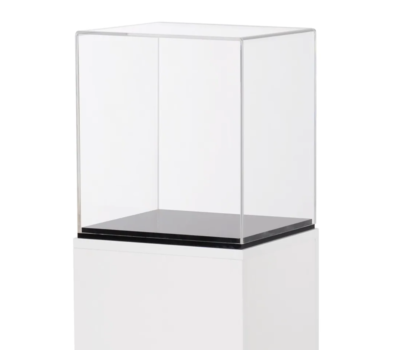Exhibition design plays a pivotal role in shaping our experiences within museums, and one of the key elements enhancing this experience is the use of acrylic display cases. These transparent structures have become a hallmark of modern museum design, revolutionizing the way artifacts, artworks, and historical pieces are presented and perceived by visitors.

Acrylic, a versatile material known for its clarity, durability, and lightweight nature, has transformed the traditional museum display. Its transparency offers an unobstructed view, allowing viewers to appreciate the intricacies of each item while providing protection from external elements. This innovation bridges the gap between preservation and engagement, catering to both the aesthetic and conservation needs of the exhibited pieces.
In the realm of museum curation, the choice of display cases is not merely functional but also an art form in itself. Curators and designers meticulously select the size, shape, and placement of these cases to complement the displayed items and the overall exhibition space. The seamless integration of acrylic cases into the museum environment offers a contemporary touch while maintaining the focus on the showcased artifacts.
One of the remarkable aspects of acrylic display cases is their adaptability. Unlike traditional glass enclosures, acrylic can be molded into various shapes and sizes, enabling the creation of custom-designed cases that suit the specific requirements of each exhibit. This flexibility allows curators to showcase items that might have been challenging to display otherwise, enriching the storytelling aspect of the exhibition.
Moreover, the lightweight nature of acrylic facilitates easy transportation and installation, contributing to the efficiency of exhibition setup and making it feasible to change displays frequently. Museums can rotate their collections more seamlessly, ensuring that visitors are treated to fresh and diverse exhibits regularly.
Beyond their practical advantages, acrylic display cases contribute significantly to the aesthetic appeal of the museum space. The sleek, transparent design imparts a sense of openness and transparency, inviting visitors to engage closely with the artifacts. By minimizing visual barriers, these cases create an immersive experience, fostering a deeper connection between the audience and the exhibited objects.
However, while acrylic display cases offer numerous advantages, they are not without their considerations. Maintenance and cleaning to prevent scratches and maintain their transparency require careful handling and specialized cleaning techniques to preserve their pristine appearance over time.
In conclusion, the integration of acrylic display cases represents a paradigm shift in modern exhibition design within museums. Their transparency, adaptability, and aesthetic appeal have redefined the way artifacts are showcased, elevating the visitor experience and allowing for greater flexibility in curation. As technology and design continue to evolve, acrylic display cases stand as a testament to innovation in the art of museum display, balancing preservation with accessibility and aesthetics.
